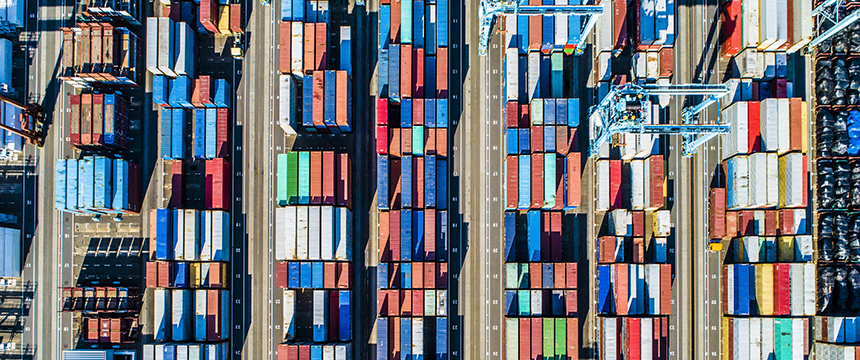Brexit: A First Look at UK-Mexico Trade Continuity Agreement's Relevant Issues

As previously reported on December 15, 2020, the Mexican Secretary of Economy and the Secretary of State for International Trade of the United Kingdom issued a joint statement to communicate the signing of the UK-Mexico Trade Continuity Agreement (the Continuity Agreement).
This document intends to summarize some relevant facts and provisions relating to the Continuity Agreement.
Origin
As we know, on June 23, 2016, voters in the United Kingdom of Great Britain and Northern Ireland (UK) decided in a referendum to leave the European Union (EU).
Negotiations began for the UK to leave the EU, which ended with a Withdrawal Agreement and a Political Declaration (respectively, Agreement on the withdrawal of the United Kingdom of Great Britain and Northern Ireland from the European Union and the European Atomic Energy Community, and Political Declaration setting out the framework for the future relationship between the European Union and the United Kingdom).
The transition period for the UK to leave the EU ends on December 31, 2020 (Transition Period).
What does the Continuity Agreement seek?
At the end of the Transition Period, the UK will no longer be part of the EU, and thus, the Economic Partnership, Political Coordination and Cooperation Agreement between the European Community and its Member States (Global Agreement) entered into by and between the EU and Mexico, will no longer apply for relationships between the UK and Mexico.
The fall back consequence of the Global Agreement not covering the UK-Mexico relationship would be that, instead of applying preferential tariffs and overall privileged circumstances in their commercial relationship, the World Trade Organization´s Most-Favored-Nation (MFN) treatment would kick in with its corresponding higher tariffs and overall not as convenient commercial conditions than those provided in the Global Agreement.
To prevent this, the UK and Mexico´s December 15, 2020 Continuity Agreement incorporates the trade provisions from the Global Agreement to regulate the trade relations between the Parties and, consequently, maintain mutual preferential tariffs and treatment. This measure seeks to avoid the disruption of supply chains created between the Parties, which represent a market of approximately £ 5,254 million.
Within the next three years, Mexico and the UK will put their efforts on completing negotiations to enter into a new free trade agreement after the date of entry into force.
We should note, though, that once the Continuity Agreement enters into force, it does not have an expiration date; Extended Accumulation of Origin provisions infra, which are to last three years, could as well be extended.
How is the Continuity Agreement structured?
Instead of starting from zero, the Continuity Agreement incorporates by reference (“mutatis mutandis,” this is, with technical changes as necessary with the Continuity Agreement´s objective and purpose in mind) the trade provisions stated in the Global Agreement to preserve the mutual preferential conditions, including reduced tariffs and tariff-quota concessions. Please note that some provisions are either modified or excluded by the Continuity Agreement.
What is actually new on the Continuity Agreement?
Some of the most relevant matters in the Continuity Agreement are:
- Extended Accumulation of Origin
Generally speaking, a good is originating of the country where its production takes place, either by using originating materials, or when foreign materials suffer a tariff shift due to the substantial transformation between such materials and the finished product.
The Continuity Agreement maintains the originating rules as in the Global Agreement, but also includes others that extend the originating status when using EU’s materials:
- EU material shall be considered as originating in the UK or Mexico when incorporated through working or processing performed in the latter countries.
- For scenario foreseen in section “A” above, when performing cleaning, packaging, labelling or similar activities in the UK or Mexico that do not change the substance of the material, a good shall be originating when value added in such countries is higher than the value of the materials originating in other countries or territories.
- Working or processing carried out in the EU shall be considered as having been carried out in the UK when further manufacturing occurs in such country (this does not apply to Mexico).
- For scenario foreseen in section “C” above, when performing cleaning, packaging, labelling or similar activities in the UK that do not change the substance of the material, a good shall be originating when value added in such country is higher than the value added in other countries or territories.
A case-by-case analysis is strongly recommended for businesses that rely on UK and Mexico manufacturing headed to those destination countries.
- Recordkeeping obligations and verifications of origin
Based on the Extended Accumulation of Origin new provisions, companies must keep records in order to prove that the goods qualify as originating in the EU, and would thus be considered as originating as well from either Mexico or the UK.
We should note that administrative cooperation understandings need to be in place for the Extended Accumulation of Origin to be applicable.
- Direct transportation extended activities
Some additional activities may be carried out during transportation of the goods. Once the Continuity Agreement enters into force, if necessary, transit, transshipment or temporary warehousing in a third country may also include splitting, storing, labelling or marking, provided they remain under the surveillance of the respective customs authorities.
Above described activities are additional to unloading, reloading or any operation designed to preserve goods in the condition as provided in the Global Agreement.
- Tariff-Quota Concessions
Pursuant to the Global Agreement, certain goods originating from Mexico may be subject to preferential customs duties upon the importation in the EU on a quantitative basis (mostly agricultural products).
As we know, the Continuity Agreement incorporates by reference the Global Agreement provisions (with certain exceptions), including the tariff quota concessions. The Continuity Agreement modifies the quota concessions in order to diminish it to 13.6%, taking into account that the products would only be consumed in the UK.
Is it binding yet?
Continuity Agreement will entry into force the latest of the following scenarios:
- The date of reception of the last notice from the Parties (UK and Mexico) relating the compliance of the internal procedures.
- The date in which the Global Agreement becomes ineffective for the UK.
However, the Continuity Agreement also provides that the Parties could provisionally apply it in accordance to each of the territories internal procedures.


